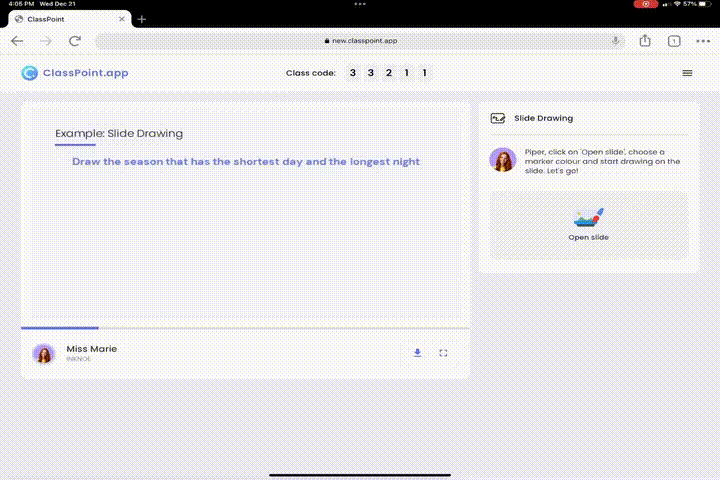Traditional lecture-based learning has its limitations, often leaving students disengaged and struggling to retain information. But what if there was a method that could transform this dynamic, empowering students to take control of their learning journey?
Enter the Harkness Method, a student-centered approach that revolutionizes the classroom experience by fostering active learning and critical thinking. The Harkness Method flips the traditional teacher-centered script, placing students at the heart of the learning process. Let’s delve into this method, exploring its core principles, the benefits it offers, and how educators can implement it in their classrooms.
The Harkness Method Explained

At its core, the Harkness method facilitates meaningful discussions that empower students to explore complex topics and learn from one another. Developed by the Philips Exeter Academy in the 1930s, this approach emphasizes collaboration, inquiry, and deep analysis.
In a Harkness classroom, teachers serve as facilitators rather than lecturers, guiding discussions through open-ended questions that provoke critical thinking and intellectual curiosity. Students are tasked with driving the conversation forward, sharing their insights, posing questions, and respectfully challenging each other’s perspectives.
| Feature | Traditional Lecture | Harkness Discussion |
| Teacher Role | Delivers information through lectures | A circular table where students face each other |
| Student Role | Passively listens and takes notes | Actively participates, shares insights, asks questions |
| Classroom Setup | Rows of desks facing the teacher | Circular table where students face each other |
| Question Type | Close-ended, seeking specific answers | Open-ended, encouraging critical thinking and analysis |
| Focus | Teacher-centered knowledge transmission | Student-centered learning and exploration |
Unlike traditional lectures, this method utilizes a unique setup:
👉 The Harkness Table: The centerpiece of the Harkness Method is the physical arrangement of the classroom. Unlike rows of desks facing the teacher, students gather around a large, oval table. This circular table promotes eye contact, creating a sense of equality among participants and encouraging everyone to actively engage in the discussion. It removes the physical barrier between teacher and student, symbolizing the shift in power dynamics towards a more collaborative learning environment.
👉 The Harkness Question Method: The teacher plays a crucial role in setting the stage for a fruitful discussion. Instead of delivering lectures, they act as a facilitator, posing open-ended, thought-provoking questions that ignite critical thinking and analysis. These questions aren’t designed to have a single “correct” answer. Rather, they aim to spark curiosity, encourage diverse perspectives, and push students to delve deeper into the subject matter.
Some examples of open-ended questions to ask with the Harkness teaching method:
- “How did the historical context influence the author’s perspective in this text?”
- “Can you identify strengths and weaknesses in the character’s decision-making process?”
- “How can the concepts we learned be applied to solve a real-world problem?”
👉 The Role of the Student: In a Harkness classroom, students become active participants, taking ownership of their learning journey. This can involve several key responsibilities, including coming to class prepared by having read assigned materials or researched the topic at hand. They take turns leading discussions, posing their own questions, and presenting their interpretations of the material. They learn to challenge ideas respectfully and build upon the thoughts of others.
Benefits of the Harkness Teaching Method

The Harkness Method isn’t just about a different classroom layout; it fosters a dynamic learning environment with a plethora of advantages for both students and educators.
For students, the Harkness teaching method encourages active participation and analysis that can lead to a more profound grasp of concepts compared to passive listening. Students hone their critical thinking, problem-solving, communication, and collaboration skills through discussions and debates while building confidence when expressing ideas and engaging in respectful conversation.
For educators, the Harkness Method fosters a dynamic and interactive learning environment, keeping students engaged and motivated. The discussions provide teachers with valuable insights into student understanding, allowing for personalized instruction. The method also promotes a culture of inquiry, where students are encouraged to become curious and independent learners, something that’s highly beneficial in their education journey.
Implement these strategies to effectively gauge your students’ understanding beyond the Harkness teaching method.
Addressing Potential Challenges and Considerations

While the Harkness Method offers numerous benefits, it’s important to acknowledge and proactively address potential challenges to ensure its successful implementation:
Challenge #1: Classroom Management
The Challenge: Maintaining a focused and respectful environment during a Harkness discussion.
The Solution: Establish clear expectations and implement effective classroom management strategies.
Implementation Tips:
- Set ground rules for respectful dialogue, active listening, and equitable participation.
- Use techniques like a talking stick to designate speaking turns.
- Implement a “wait time” policy to allow all students an opportunity to formulate their thoughts.
Challenge #2: Student Comfort Level
The Challenge: Encouraging participation from quieter students can be challenging.
The Solution: Implement differentiated approaches that cater to individual comfort levels and learning styles.
Implementation Tips:
- Provide opportunities for quieter students to contribute through written responses.
- Organize small group discussions to encourage participation in a more intimate setting.
- Utilize online platforms for asynchronous discussions, allowing all voices to be heard.
Challenge #3: Assessment
The Challenge: Assessing student participation and learning outcomes in Harkness discussions requires a nuanced approach.
The Solution: Utilize a variety of assessment tools and strategies aligned with learning objectives.
Implementation Tips:
- Use observation, peer evaluations, and reflective journals to evaluate student performance.
- Incorporate formative assessment techniques like exit tickets and reflection prompts to gain insights into student understanding and engagement.
- Provide constructive feedback to students to support their learning and development.
Pro Tips for Bringing the Harkness Method to the 21st Century Classroom

The Harkness Method, with its emphasis on active learning and student discussion, can be a powerful tool for educators in the 21st-century classroom. However, adapting a method rooted in tradition to the realities of today’s classrooms requires thoughtful planning and execution.
Here’s a breakdown of the key steps to consider and how you can seamlessly integrate the Harkness teaching method with ClassPoint, the go-to all-in-one PowerPoint add-in for teachers across the globe!
#1 Preparation is Key

- Harness Interactive Tools: Utilize online resources and collaborative tools to enhance student preparation. Consider online discussions, shared documents, or flipped classroom approaches where students encounter core concepts beforehand and use class time for deeper analysis.
Pro Tip: ClassPoint offers a range of features to help facilitate a Harkness table, including interactive quizzes, polls, and live Q&As, seamlessly integrated into PowerPoint presentations. Teachers can gauge student understanding, gather feedback, and assess participation in Harkness discussions without leaving their presentations.
- Curate Engaging Materials: Move beyond traditional textbooks and embrace a variety of multimedia resources like podcasts, documentaries, or online simulations to pique student interest and cater to diverse learning styles.
- Craft Compelling Questions: Don’t settle for simple recall questions. Formulate open-ended, thought-provoking questions that encourage critical thinking, analysis, and the application of knowledge to real-world scenarios.
#2 Embrace the Power of Technology

- Digital Harkness Tables: While the physical Harkness table method remains valuable, consider incorporating online discussion platforms or video conferencing tools to facilitate Harkness discussions in remote or hybrid learning environments.
- Interactive Whiteboards & Collaborative Documents: Utilize technology to enhance presentations, share visual aids, and brainstorm ideas collectively during Harkness discussions.
Pro Tip: ClassPoint's presentation tools enable teachers to transform traditional presentations into interactive learning experiences where students can annotate diagrams, drag and drop objects, and brainstorm ideas on virtual whiteboards.
- Digital Assessment Tools: Explore online quizzes, polls, and collaborative mind maps to assess student understanding and participation within the Harkness discussion framework.
Pro Tip: Craft your Harkness discussion questions directly within your PowerPoint slides using ClassPoint's interactive quiz feature. Integrate multimedia resources like images, videos, and even live polls to spark student interest and encourage diverse perspectives.
#3 Cultivating a Dynamic Discussion Environment:

- Establishing Ground Rules: Set clear expectations for respectful debate, active listening, and participation. Encourage students to build upon each other’s ideas and acknowledge diverse perspectives.
- The Art of Facilitation: As the teacher, your role is to guide the discussion, not dominate it. Use follow-up questions to push students beyond surface-level understanding and ensure balanced participation.
- Differentiation for Diverse Learners: Provide opportunities for quieter students to contribute through written prompts or breakout group discussions before rejoining the main conversation. Consider using technology like online polls to anonymously gather student input.
ClassPoint supports differentiation by offering customizable features that cater to diverse learner needs. Teachers can provide alternative modes of participation, such as written responses or virtual breakout groups, to accommodate quieter students or learners with varying communication preferences.
#4 Assessment and Feedback

- Moving Beyond Tests: While traditional assessments still have a place, the Harkness teaching method calls for a more holistic approach. Evaluate participation, critical thinking skills displayed during discussions, and the quality of student-led presentations.
Pro Tip: Formative assessments stray from the traditional approach and are a great way to assess students’ understanding while keeping them actively engaged. Check out our collection of formative assessment questions for math, science, and kindergarten students.
- Encourage Peer Assessments: Develop a rubric that outlines key criteria for successful participation in Harkness discussions. This could include aspects like the quality of questions asked, active listening, building upon others’ ideas, and demonstrating critical thinking. Students can use this rubric to assess their own participation and provide constructive feedback to their peers.
Pro Tip: Before conducting peer assessments, establish clear guidelines and criteria for evaluation. Encourage students to focus on providing specific, constructive feedback rather than criticism. Consider providing students with a structured feedback form or rubric to guide their assessments.
- Self-Assessment and Reflection: Empowering students to self-assess their participation and learning can promote metacognition and ownership of their learning process. Encourage students to reflect on their contributions to Harkness discussions, their understanding of the topic, and areas for improvement. Self-assessment activities can take various forms, such as journal entries, reflective essays, or online reflection platforms.
Pro Tip: Integrate regular self-assessment opportunities into the classroom routine using Quick Polls. To encourage students to set personal learning goals and track their progress over time. Provide prompts or questions to guide students' reflections and help them identify strengths and areas for growth.
- Socratic Seminars: These structured discussions are centered around a particular text or topic, where students engage in dialogue to explore and deepen their understanding. In a Harkness classroom, Socratic seminars can serve as a powerful assessment tool. Teachers can assess students based on their contributions to the seminar, their ability to ask insightful questions, their use of evidence to support their arguments, and their engagement with peers’ ideas.
Pro Tip: Provide students with guiding questions or prompts to help them prepare. During the seminar, observe students' participation, note-taking, and active listening skills. Consider using a rubric to evaluate students' contributions, critical thinking, and communication skills.
As you incorporate these strategies, be prepared to adapt and refine your approach based on your students’ needs and specific learning objectives. The key is to foster a classroom culture that values active participation, critical thinking, and the joy of collaborative learning through the Harkness Method.
Final Thoughts
The Harkness teaching method presents a compelling alternative to traditional lecture-based learning. It empowers students to take ownership of their learning journey through active participation, critical thinking, and collaboration. This approach equips them with the skills necessary to become lifelong learners who can thrive in this rapidly changing world.
While implementing the Harkness Method requires thoughtful planning and addressing potential challenges, the rewards are substantial. With clear expectations, effective classroom management strategies, and a commitment to fostering a supportive learning environment, educators can unlock the full potential of this method.
Embrace the opportunity to experiment, adapt, and refine your approach based on your students’ needs and your own teaching style. As you embark on this journey, you’ll be well on your way to educating a generation of critical thinkers, effective communicators, and collaborative problem-solvers – all essential skills for success in the 21st century.
